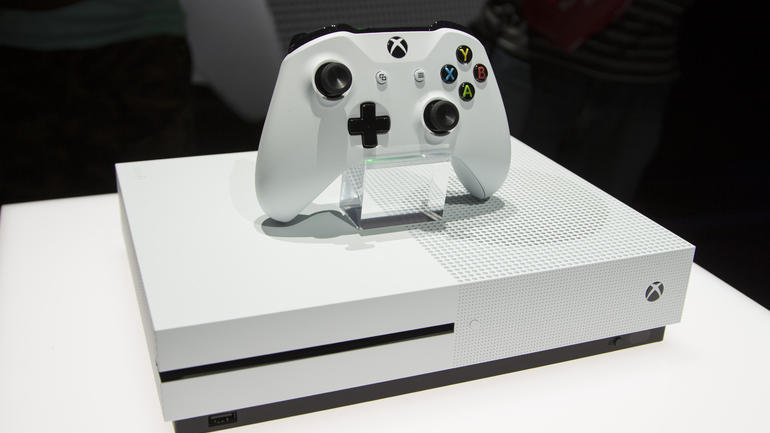If you’ve discovered your Galaxy S7 is overheating, then let me walk you through a few troubleshooting steps to figure out how to fix it.
It can be difficult to figure out what exactly is causing your Galaxy S7 or S7 Edge to overheat, but hopefully I can cover enough examples to help. Since we can’t physically open up the Galaxy S7 to check and see if it’s a hardware issue, my suggestions below will be all about software. If you still can’t resolve the issue by following all of these troubleshooting steps then it’s likely that you need to try and get the device replaced.
It’s been less than a year since the Galaxy S7 and S7 Edge was released (at the time of writing this), so you should still be under Samsung’s manufacturer warranty.
If you’re reading this article later and you’ve already passed your warranty, or you have voided your warranty in some way, then there’s not much else we can do. You could either figure out a way to deal with it or possibly sell it for parts. Please do not sell the device without telling the potential buyers that it overheats though. That’s not fair to the buyer and it will certainly get you a poor review on eBay, Swappa, or whatever other reseller website you’re using.
Galaxy S7 Overheating
Before we start to discuss which troubleshooting steps we should try, we should first begin by learning what is actually happening when your Galaxy S7 overheats. Most people will see this issue while gaming (especially in the Gear VR) and that is because the game you’re playing is so graphic intensive that the CPU and GPU doesn’t get a chance to take a break. While smartphones these days are very powerful, they aren’t meant to be run full blast for hours or even minutes at a time. More often than not, the kernel will start to throttle the performance of the CPU and GPU when the device gets so hot.
So you could see a game or whatever start to skip frames, lag or simply crash entirely. This will help to cool the device off and then when it’s ready, the kernel will ramp back up and go full power again. This is all automatic and doesn’t require anything to be done on your end. This even protects your device from melting so it’s considered to be a good thing. Now this is a regular example of overheating but this same thing can happen when you’re not gaming because of a bug, a poorly coded app or even just a service that has gone haywire. The goal of the troubleshooting steps below will help you to find out what exactly is causing the issue.

Check Battery Stats
If the Galaxy S7 overheating issue is caused by an application, the offending application will likely show up at the top of your battery usage page. This isn’t always the case because, sadly, the battery usage page isn’t that accurate. Still, this is a quick thing you can do to check and it is possible that you’ll find the culprit right here on your first troubleshooting step. Now, if you see something at the top of the list, but it’s an application that you use a lot, then it’s probably safe to say that it isn’t causing the overheating issue. Technically it could be, but unless it’s showing 80% usage or something then it’s likely there just because you use it.
However, if you see an application at the top or even toward the top of the list that you never use (or hardly ever use), then this could be the cause of the issue. I know I’ve had trouble with various casual games where I’d play it for 10 minutes before bed and then wake up with 50% of my battery gone. What can happen is the game (or even an app), can continue running in the background and this prevents your device from going into its Deep Sleep mode. So if you see something up there that shouldn’t be, then it’s worth trying to uninstall it and seeing if that resolve the overheating issue.
Remove the Case
Oddly enough, if you’re using a protective case then that can help to contribute to the Galaxy S7 overheating issue. So I would suggest you remove the case and see if you experience the same level of overheating issues. More often than not, a protective case will only add a tiny amount of heat to your device (because it’s literally preventing that heat from dissipating properly). However, this usually isn’t the leading cause of an overheating issue. It’s always worth taking off a case to see if it’s helping to contribute to the overall temperature of the Galaxy S7 or S7 Edge.
So I would suggest that you first take the case off and then go through the same routine you normally do when you notice it getting hot. If you notice it taking a little bit longer to heat up, but still seeing the Galaxy S7 overheating, then the main cause is likely something else. So while the case is still contributing to the heat generation, it’s not the root cause of the problem so it should be safe to use the case again once we can eliminate the Galaxy S7 overheating issue. I would suggest keeping the case off until you figure out the cause, but don’t do this if it means you’ll break the phone from a high drop or something.

Force Close Everything
The next thing I would suggest doing is to force close any and all applications that you have running. You should be able to do this by pressing the Recents button and then swiping all of the applications that you see there. If the application is coded properly, then it should send a signal to it and then tell it to close the app. Sadly, this doesn’t always work and if you’re having an overheating issue then it’s possible that an application or game is causing the issue. Just like with playing a game for too long, if an app is kept running at full blast for too long then it can cause the Galaxy S7 to overheat.
Now, if you’re still experiencing the overheating issue after you have swiped all of the apps away, then the app that is causing it (if it’s an app that is causing it) could still be running in the background. The next thing I would suggest is to go into the Settings app, then Applications and then Application Manager. Then I would go through here and tap on any and every app that you frequently use and then tap on the Force Close button next to the Disable button. This will actually force the application or game to close and this could resolve the issue for you. If it does, then you’ll need to find out exactly which app it is and then uninstall it completely from your device.

Reboot into Safe Mode
While you could go through each and every application installed on your Galaxy S7 and force close them all, you could also boot into Safe Mode to see if it’s actually an application that is causing the issue. The reason why I didn’t suggest this first is because Safe Mode will only disable 3rd-party applications. So if it’s a pre-installed application that is causing the issue then booting into Safe Mode will not help anything. If you’re not familiar with booting into Safe Mode on the Galaxy S7 then thankfully you can follow a previous tutorial I have already written.
You can learn how to boot the Galaxy S7 into Safe Mode by following that link there, and it will walk you through the entire process. Once you are in Safe Mode on the Galaxy S7, try and replicate the same conditions that originally saw the overheating issue. Sadly, you can’t play a game or use a 3rd-party application here, but hopefully you can see if it helps or not by just using the device for an extended period of time. If the Galaxy S7 overheating issue resolved while in Safe Mode, then your best bet is to uninstall your 3rd-party apps one at at time until you find the culprit.

Clear the Cache Partition
Some corrupt cache data can also be the cause of your Galaxy S7 overheating issue. It’s possible that an application has written some corrupt data on the cache partition, or maybe previously written data on this partition went corrupt. Either case is a likely scenario and it could cause an application to continue trying to read that same piece of data over and over until it cannot anymore (like when you force close it or when the battery dies). There’s a couple of ways you can go about clearing the cache and I want to talk about both of them right now.
First of all, if you know exactly which app is causing the issue (if for example you saw the app at the top of your battery stats page), then you could simply clear the app cache on the Galaxy S7. If you don’t know how to do that, then simply follow the link I just gave you there and that will explain the entire process. More often than not though, you won’t know exactly which app is causing the issue so then you’ll simply want to wipe the cache partition on the Galaxy S7. Just like before, if you don’t know how to do this then simply follow that link and follow the steps I have wrote in a previous tutorial.

Perform a Factory Reset
I always save the suggest for a factory reset for last because I understand how much of a pain it can be to have to set a phone up all over again. I know plenty of people who have switched phones entirely because they don’t want to set their original phone back up (I’m not sure what type of logic that is). However, there are many times when there is simply something buggy in the core Android OS and it has to be reset in order to fix it. If you don’t know how to do this, then you can follow this guide on how the factory reset the Galaxy S7 so you can follow the step by step process there.
If the Galaxy S7 overheating issue is because of the software (within the core Android OS, an app, etc), then a factory reset will most likely fix the issue. I’ve seen sometimes where a factory reset still doesn’t help but more often than not the factory reset will fix all software related issues. Now, sadly an over heating issue doesn’t have to be caused by the software. As I mentioned earlier, it could be from the hardware itself. If it’s from the hardware then you’ll need to replace the device but if it’s a software issue then a factory reset should be your last troubleshooting step.
Like I said, a smartphone overheating can be caused by many, many different reasons and it’s possible that whatever is causing yours to overheat is something that isn’t on this list. I’m just trying to cover as many points as possible to hopefully narrow the field and help you to figure out what is causing the issue.
Let me know if any of these troubleshooting steps helped to resolve your Galaxy S7 overheating issue.





